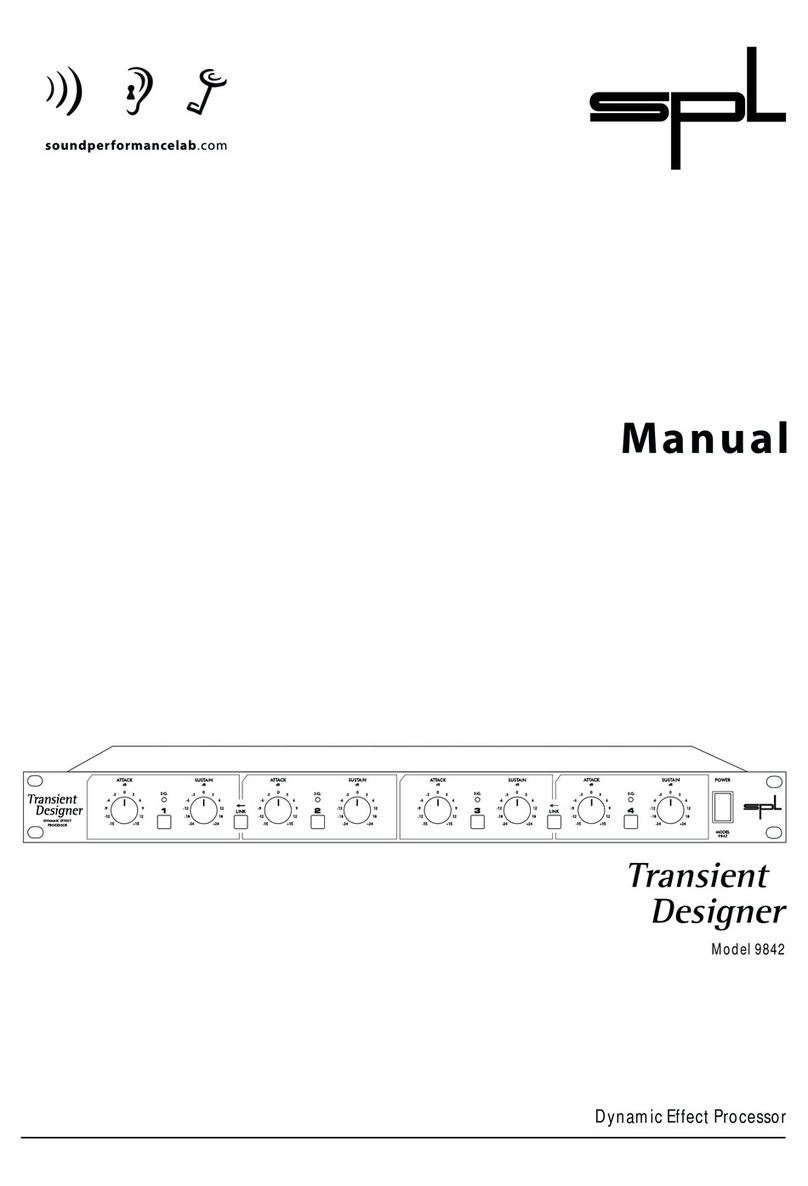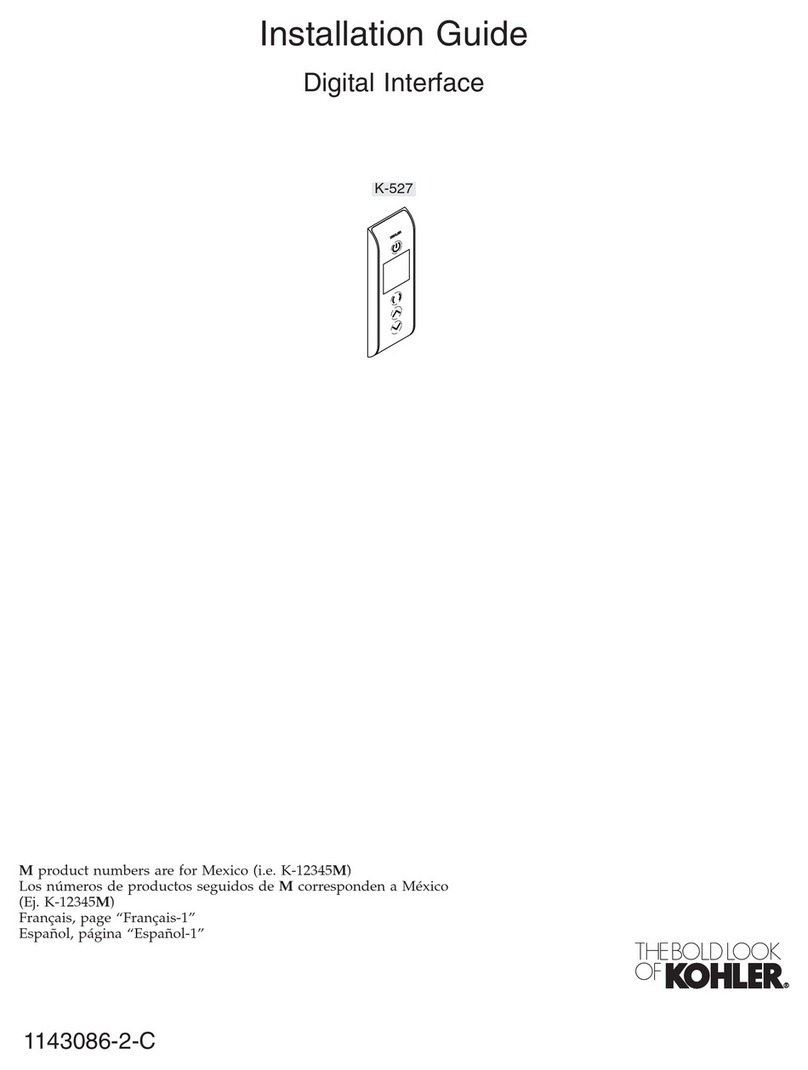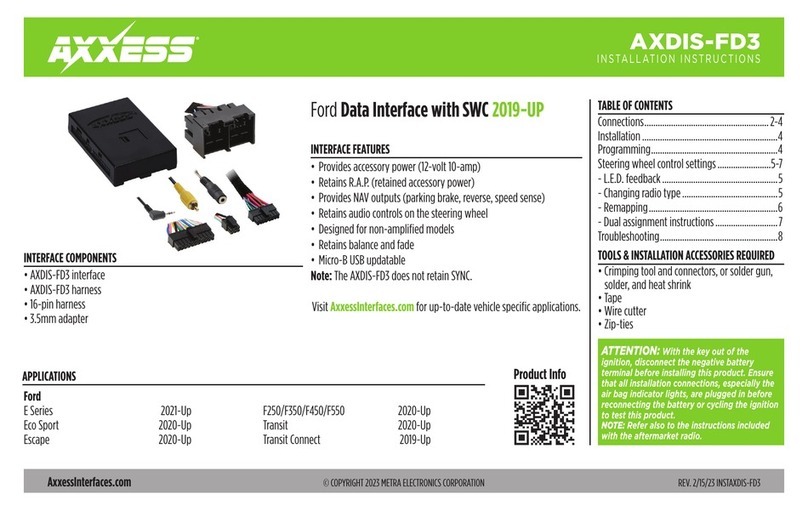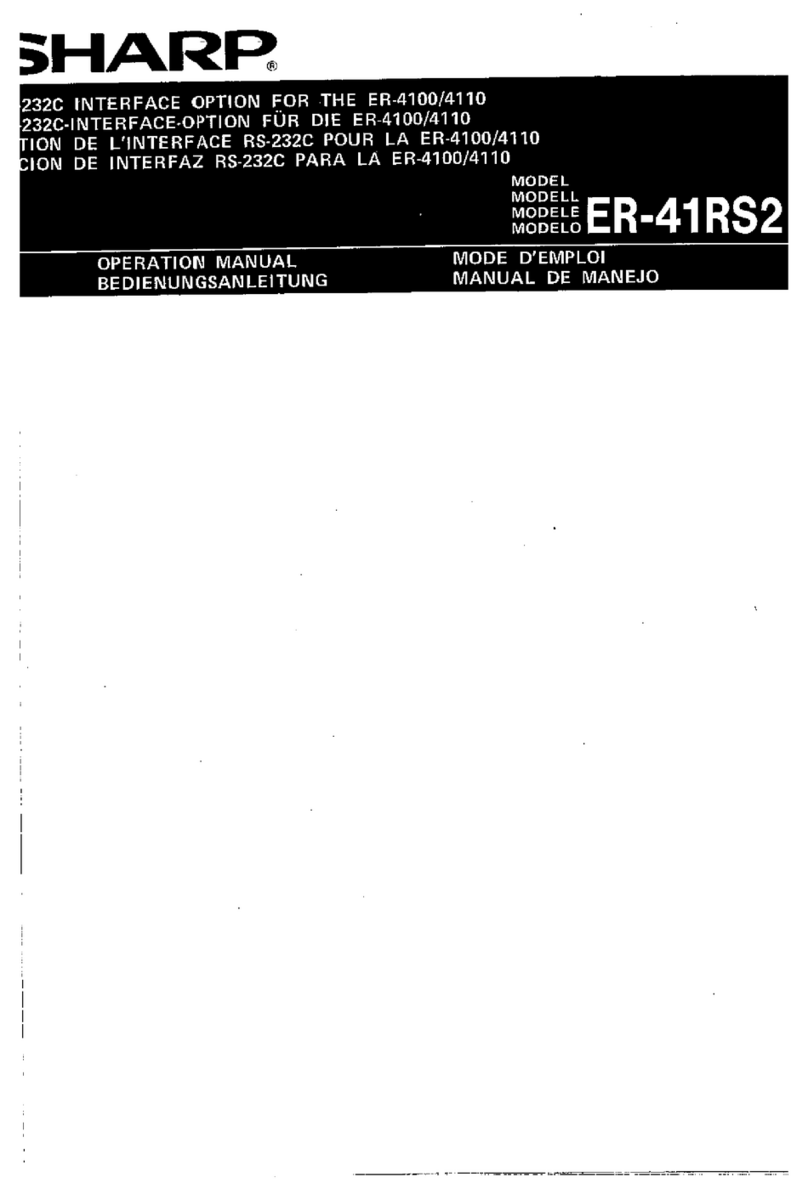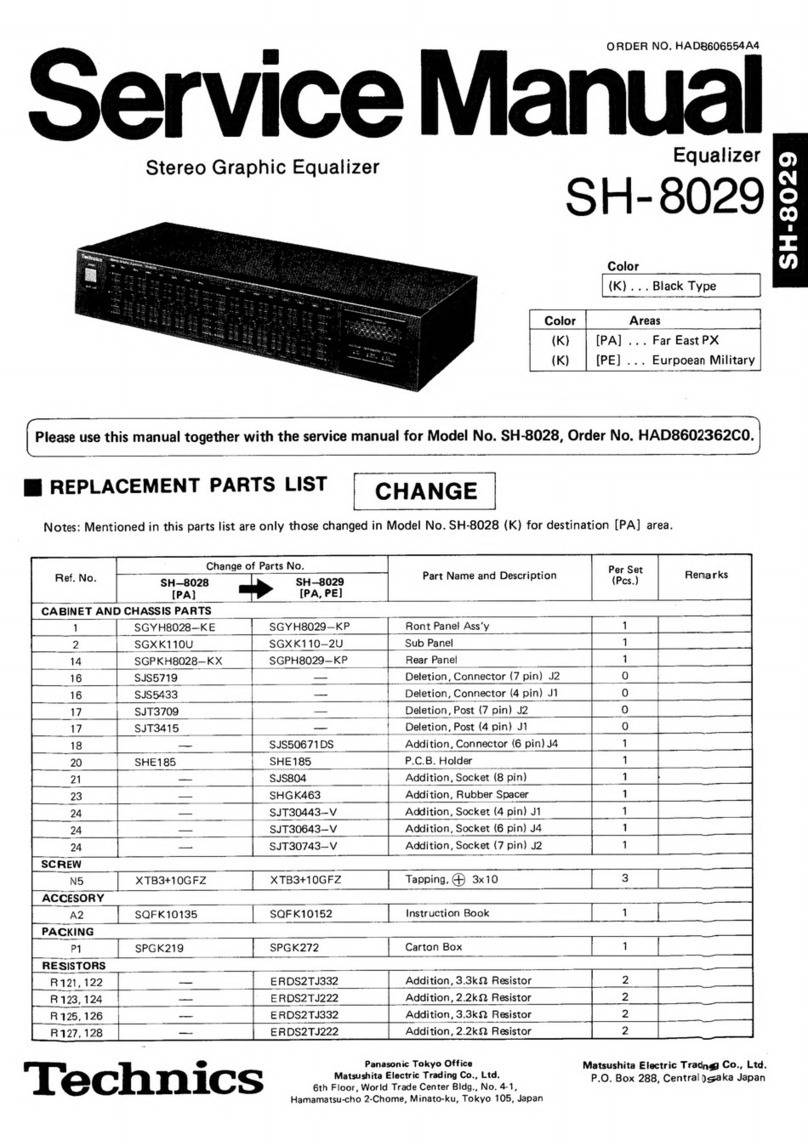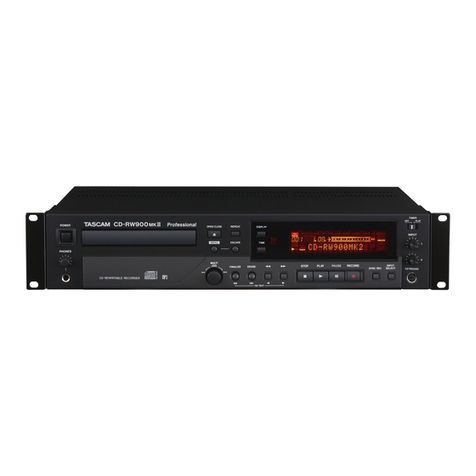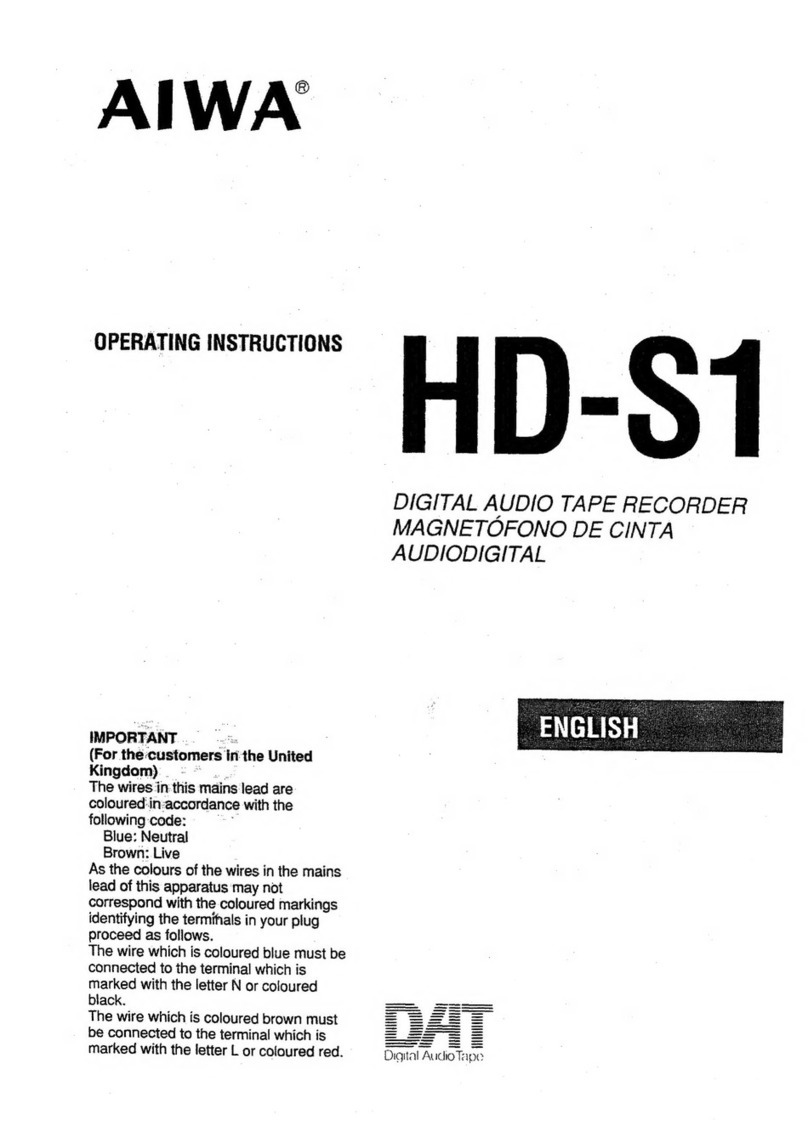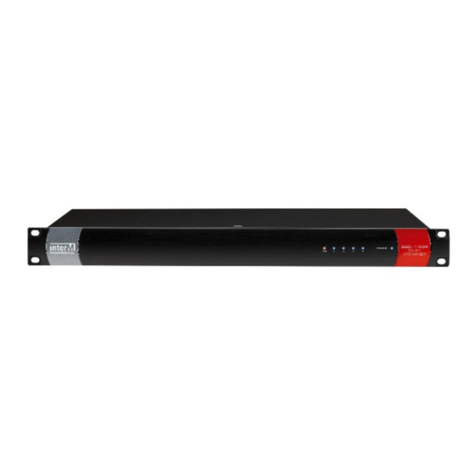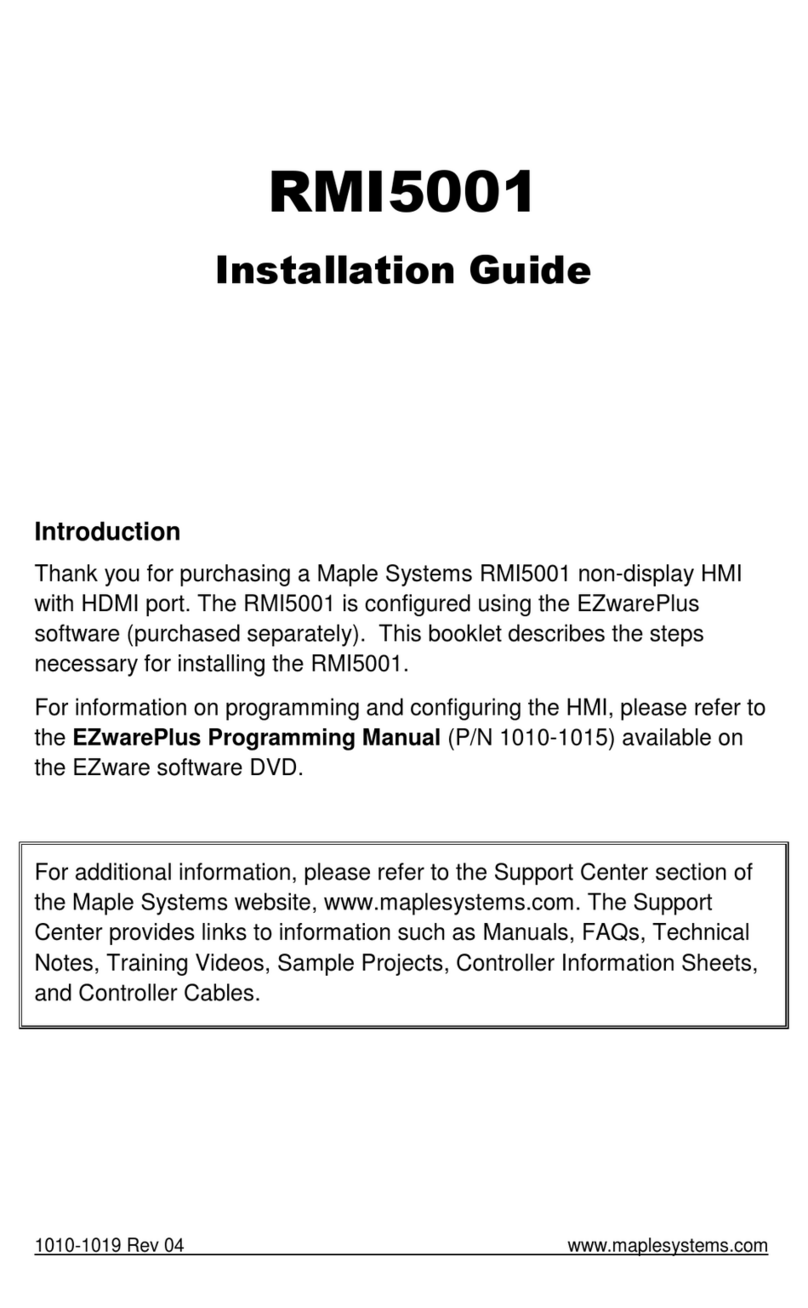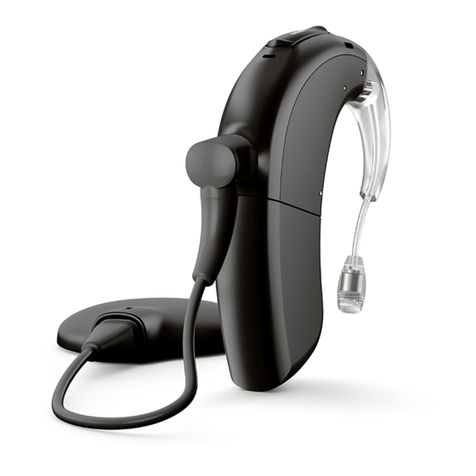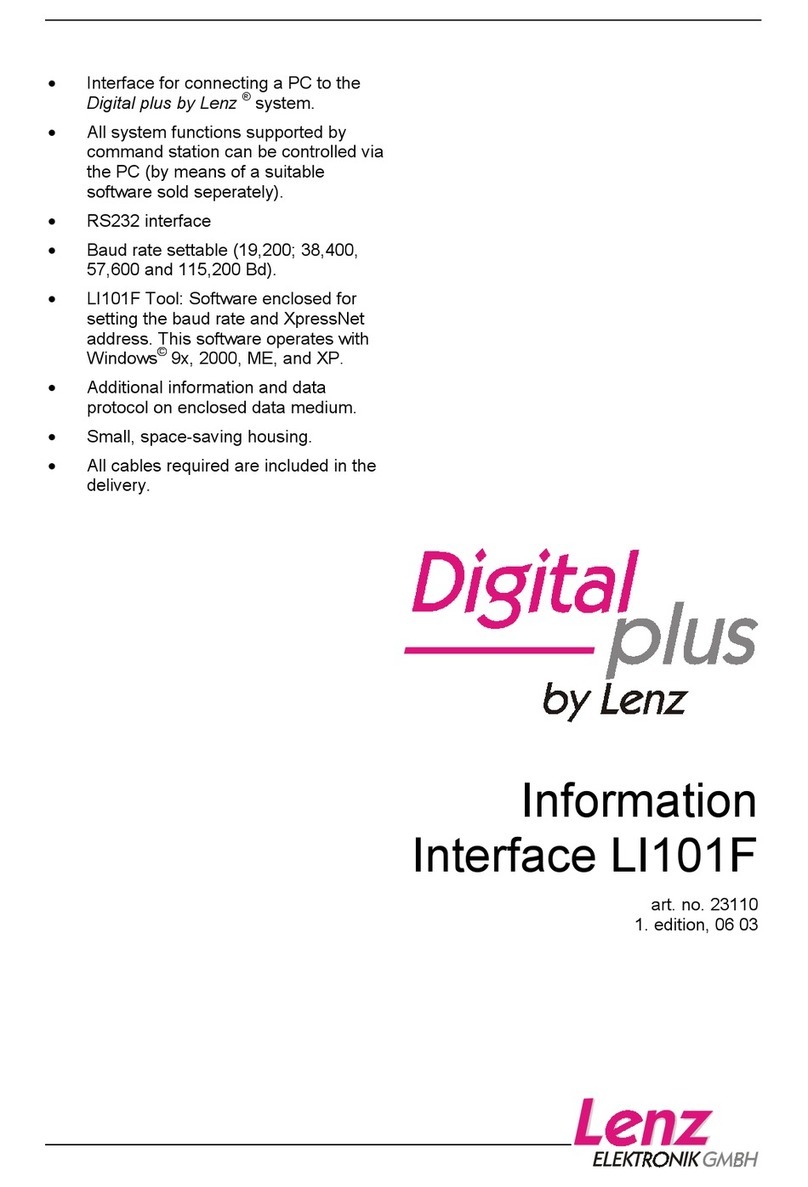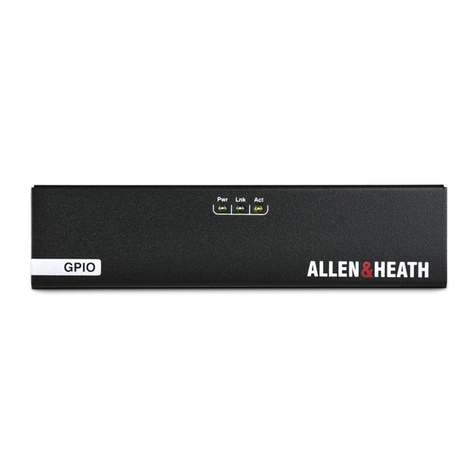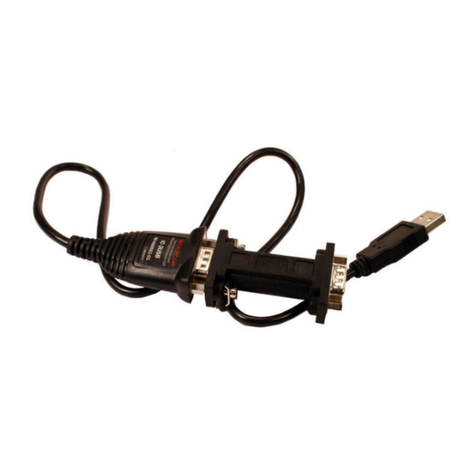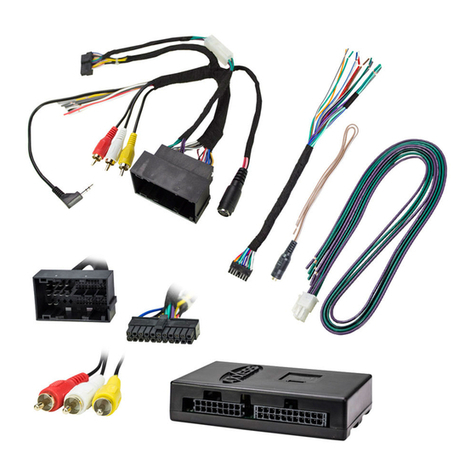Sound Performance Lab 9737 User manual

Manual
Digital Tape Saturation Processor
Machine Head
Model 9737

SOUND PERFORMANCE LAB
by Hermann Gier
Version 1.3 – 1/1999
The information in this document has been
carefully verified and is assumed to be correct.
However Sound Performance Laboratory (SPL)
reserves the right to modify the product
described in this manual at any time. Changes
without notice. This document is the property of
SPL and may not be copied or reproduced in
any manner, in part or full without the autho-
rization of SPL.
Limitations of Liability:
In no event will SPL be liable for any damages,
including loss of data, lost profits, cost of cover
or other special, incidental, consequential or
indirect damages arising from the use of the
unit, however caused and on any theory of liabi-
lity. This limitation will apply even if SPL or an
authorized dealer has been advised of the
possibility of such damage.
SPL electronics GmbH
P.O. Box 12 27
D- 41368 Niederkruechten, Germany
Phone: +49 - 21 63 / 9 83 40
Fax: +49 - 21 63 / 98 34 20
eMail: info@spl-electronics.com
www.spl-electronics.com
©1999 SPL electronics GmbH. All Rights Reserved.
MACHINE HEAD
MODEL 9737
Manual

3
Machine Head
© SPL electronics GmbH, Stand 10/97
Contents
Dear customer,
Thank you for the confidence you have shown towards SPL
electronics GmbH by purchasing the SPL MACHINE HEAD. You
have decided to use a tool of high performance which sets you
in the position to have faster success and a better sound quality
in your music productions, pre-masterings and masterings.
As a typical SPL unit the MACHINE HEAD combines exemplary
specifications and high manufacturing standard with excellent
sound quality to provide you a precious component for studio
and mastering purposes. Please read this manual carefully to
ensure you have all the information you need to use the
MACHINE HEAD.
We wish you every success with the MACHINE HEAD.
Your SOUND PERFORMANCE LAB-Team
I would like to start with my thanks to all our staff, who
created what is to be described here. Special thanks go to Kai
Lukas from Lukas & Hartmann Soundart, Jörg Houpert and
Klaus-Peter Webersinke from Spectral Design as well as
Harald Obenland from Octum electronics. The importance of
their exceptional qualification and talents cannot be overesti-
mated.
Our products are often tested and compared in many publica-
tions and by our customers themselfs and constantly valued
with best results. I would like to pass on this broad appreciation
to those, who deserve it – my excellent colleagues.
Hermann Gier
Foreword
Thanks
Foreword 3
Thanks 3
Introduction 4
Operation Safety 5
Connections 6
Installing Updates 6
Quick Start 7
Analogue Tape Recording Signal Flow 7
Control Elements 8
ACTIVE 8
INPUT GAIN 8
DRIVE 8
HF-ADJUST 9
OUTPUT GAIN 10
HIGH TAPE SPEED 10
LC-DISPLAY 10
LED CHAINS 10
PRESETS 11
INFO (HARDWARE DIALOGUE)11
Specifications 15
Warranty 16

4Machine Head
Machine Head
Machine Head © SPL electronics GmbH, Stand 11/96
The MACHINE HEAD is a creative sound and dynamics processor
within SPL´s Digital-Red series.
Concept: The algorithm used by MACHINE HEAD computes
authentic tape saturation effects, hitherto unavailable in the
digital domain.
The subjective sonic effects are an increase in loudness and a
better penetration of the mix at identical peak level. The sound
becomes warmer and more powerful, and the process elimi-
nates the harshness usually associated with digital recordings.
MACHINE HEAD is designed for mastering applications. Mixes
gain more power, punch and warmth. It is also suited to process
single instruments, like electronic or acoustic guitars and
basses, drums, loops and samples, as well as complete stereo
mixes.
The algorithm used by MACHINE HEAD precisely reproduces the
analogue tape saturation effect, including hysteresis effects, the
harmonic characteristic and both linear and non-lineare trans-
mission-characteristic (other than level) that occur when recor-
ding to analogue tape.
The level behaviour and high frequency damping is repro-
duced in a modified manner. To achieve the best possible signal
to noise ratio, an auto gain cell has been implemented into the
algorithm in order to create a processing range for saturation
effects for full scale input signals and to deliver full scale output
signals afterwords. The intensity of high frequency damping
varies from one tape to another, and is therefore fully adju-
stable one the MACHINE HEAD. It is now also possible to make
use of extreme saturation effects without high frequency
damping at all.
In fact MACHINE HEAd provides all the benefits of analogue
recording without any of the shortfalls – MACHINE HEAD does
not reproduce cross-talk, pre or post echoes, noise floor (field
noise, modulation noise) and motor speed fluctuation characte-
ristics of analogue tape machines!
Operation: MACHINE HEAD is operated with four controls and
one switch function:
INPUT GAIN: Controls the input level of the digital data
stream
DRIVE: Controls the drive or recording level of the
“virtual analogue tape machine”
HF-ADJUST: Controls the intensity of high frequency boost or
damping
OUTPUT GAIN:Controls the output level of the digital data
stream
HIGH TAPE SPEED: Switches from normal tape speed (15ips) to
high tape speed (30ips).
Introduction
Creating authentic tape
saturation effects.
The sound becomes warmer
and more powerful, elimina-
ting the harshness of digital
recordings.
Precise reproduction of:
- tape saturation effect
- hysteresis effect
- harmonic characteristic
- linear and non linear trans-
mission characteristic
Modified reproduction of:
- level behaviour
- high frequency damping
Not reproduced are:
- cross-talk
- pre or post echos
- noise floor
- motor speed fluctuation
Easy and intuitive operation

5
Machine Head
Operation Safety
Indicators and meters:
MACHINE HEAD is equipped with PPM displays for input and
output levels. The first LED of each input and output meter is a
signal (SIG.) LED which illuminates when a compatible digital
data stream is present at the inputs. The LEDs are a first indi-
cator to check the data stream. If the LEDs do not illuminate the
data stream is interrupted or invalid.
The top LEDs of each input and output meter indicate if a
digital clip has occured at the inputs or due to processing within
MACHINE HEAD. Clipping that is already present at the inputs will
also be shown on the OUTPUT PPM chains.
The DRIVE LED chains display the drive or recording level that
is sent to the virtual tape. The values shown range from -10dB
to +21dB.
The philosophy behind the digital audio processors is that
they are designed to be operated like analogue units; there is
only one INFO menu but no multi-function controls. The LCD
readout simply shows the current encoder positions and the
preset number. The encoders are built without clicks or detents,
so they feel like analogue pots. Our DSP platform uses two
Motorola 56002 DSPs running at 66MHz. This enormous
computational power guarantees real-time operation where
sophisticated DSP algorithms will not be restricted by resource
limitations. The general concept is that each digital processor
should fulfill only one task, in the most effective way possible,
and with a minimum of controls and switches. As much as
possible should be automated to promote user-friendly opera-
tion – the external controls access only the sonically relevant
parameters.
The housing of the MACHINE HEAD has the standard 19"- EIA
format and occupies 1U (44.45 mm) in your rack. When instal-
ling the unit in a 19"-rack, the rear side of the unit needs some
support, especially in a touring case.
The MACHINE HEAD should not be installed near units which
produce strong magnetic fields or extreme heat. Do not install
the MACHINE HEAD directly above or below power amplifiers.
Check that the voltage details quoted on the back panel
are the same as your local mains electricity supply. Use a
minus (-) screwdriver to set the voltage selector to the
voltage for the area in which the unit will be used.
Never cover up the ventilation slots on the top of the unit.
If, during operation, the sound is interrupted or indicators
no longer illuminate, or if abnormal odor or smoke is
detected, or if liquids are spilled on the unit, immediately
disconnect the power cord plug and contact your dealer.
Only clean your MACHINE HEAD with a soft, lint-free cloth.
SIGNAL-LEDs to verify data
stream
Clip-LEDs
Input and Output
PPM metering
DRIVE-LED displays recording
level
The DSP Platform:
Enormous computational
power guaranteeing real-
time operation
„Analogue“ control feeling
User-friendly programmed
software

6Machine Head
Connections Before connecting the MACHINE HEAD switch the power off at
all connected units.
The rear panel provides AES/EBU- and S/P-DIF-inputs and
outputs. Any additional channel, status and user-bits are
passed through unaltered, and the outputs can be used at the
same time if required.
The MACHINE HEAD operates with 24 bit word width. It accepts
16 to 24 bit inputs and will create output signals according to
the input resolution.
For synchronisation purposes WORDCLOCK INand WORDCLOCK
THROUGH BNC connectors are fitted with a switchable 75 Ohm
termination.
MIDI INand MIDI THROUGH connectors allow presets to be
selected via MIDI program change commands.
For easy upgrade of future software releases, the rear panel
offers RS-232 interface for PC and RS-422 interface for MAC.
Installing Updates:
Note: All presets will be lost after installing a new software version!
1. Connect your computer with the MACHINE HEAD via a
serial port with a standard Z-modem cable.
RS-232 for PC and RS-422 for MAC.
2. Open a terminal program like “Hyperterminal” on PC
and make the following adjustments:
Baud rate: 9600; Stop bit: 1; Parity: none; Data bit: 8;
Handshake: no; Transfer mode: ZMODEM
3. Switch on the MACHINE HEAD and depress both
PRESET UPand PRESET DOWN until the LC-display says
“wait for Zmodem download“.
4. Load the update file into your terminal
program and send it to the MACHINE HEAD. The LC-
display shows the progress of the download in kB.
5. After successfully installing the new software version the
LC-display says “download valid”.
6. Switch the MACHINE HEAD off and on after 4 sec. The
new software version number is displayed in the first
INFO page (simultaneously depress STORE and APPLY;
also refer to CONTROL ELEMENTS No. 9, INFO).
7. If an error occurred during download the LC-display says
“download failed”. The MACHINE HEAD now waits for a
new download. Please check all adjustments on your
terminal program and try again. If you are still un-
successful contact your local dealer.

7
Machine Head
Quick Start
Analogue Tape
Recording Signal Flow
Magnetic Tape:
Hysteresis Curve
Record
Head
Erase
Head Playback
Head
Input
High frequency
Bias Current
Record
Equaliser Playback
Equaliser Output
All controls are in the start-off positions:
INPUT GAIN 0, DRIVE 0, HF-ADJUST 0,
OUTPUT GAIN 0, TAPE SPEED 15
1. Press ACTIVE. LED illuminates.
2. Increase the DRIVE-value to saturate the “virtual” tape.
Set DRIVE to about 6. If the output level increases, use
the OUTPUT GAIN control to compensate for the increase.
3. If more saturation is wanted, it may be necessary to
reduce the INPUT GAIN slightly to prevent clipping.
4. Use the HF-ADJUST control to create the typical high
frequency damping effect (negative values) or increase
the high frequencies and harmonical content (positive
values).
The audio signal that passes the input electronics of an
analogue tape machine is first processed by the recording
equalizer. The high frequencies are boosted to compensate for
the level loss of those frequencies during magnetization and to
improve the signal to noise ratio.
A high frequency bias current is afterwards added to the
signal to linearize the non linear hysteresis transfer curve of the
magnetization.
The recording head converts the current of the input signal
into a magnetic field. The field magnetizes the magnetic
particles on the passing tape. This process is physically complex
and non linear. Hysteresis curves lead to the typical saturation
effect and to the effect of short wavelength losses.
The playback head converts the magnetic field of the passing
tape back into current and voltage. The playback equalizer has
a normed frequency response (e.g. CCIR/NAB) which makes
the overall freqency response flat and compensates for the
additional boost in the recording equalizer.

8Machine Head
Relay hard-bypass for
AES/EBU input and output
Setting the recording level of
the ‘virtual tape machine’
Control Elements
The ACTIVE function switches the MACHINE HEAD on or off. The
illuminated LED indicates that the processing has been
activated.
The software bypass also compensates for the 5ms time
delay between processed and unprocessed signal.
The AES/EBU input and output are equipped with relay-
hard-bypass. In the event of a power failure the MACHINE HEAD
is automatically switched to hard-bypass (power failure safety)
without interrupting the data flow.
INPUT GAIN adjusts the input level of the digital data stream .
Adjustable values range from -12.0dB to +12.0dB in 0.1dB
steps. The value is shown in the LC-display (see 6) and the INPUT
PPM meters displays the actual input level after theINPUT GAIN
control.
In practise you will start with the INPUT GAIN set to 0dB. For
most applications this is the appropriate setting. If your source
material is of ver y low level or not normalized yet, you can use
the INPUT GAIN control to drive the source material near full
scale. If you are processing full scale material it may be neces-
sary to reduce the input signal by one or two dBs to create new
headroom for the processing. Reduce the INPUT GAIN with the
proviso of the INPUT-CLIP LEDS(see 8).
The DRIVE control is the most important parameter of the
MACHINE HEAD. You set the recording level above the normal
working level of the analogue tape machine. The adjustable
values range from -7 to +14 in 0.2dB steps and will be shown
in the LC-display (see 7). The corresponding recording level is
displayed by the DRIVE LEVEL-LED bars (see 8).
Active
2
1
Input Gain
Drive 3
3
2410
18
5
769

9
Machine Head
Practical values for the DRIVE
are 3 to 8.
The paragraph besides offers
some information on internal
signal level management.
Above: original signal
Below: processed signal
showing increased loudness
Both signals are normalized
to 0 dBFs.
Adjusting the high frequency
damping effects
The higher the DRIVE the more intense gets the saturation of
the tape. While increasing the DRIVE value the output level may
increase, too. Compensate for this by reducing the OUTPUT GAIN
value (see 5) and monitor the OUTPUT LEVEL meters. The subjec-
tively the perceived loudness will increase more dramatic than
the actual PPM value!
Recommended values are 3 to 8 for the DRIVE-parameter
which corresponds with +10dB to +15dB for the actual DRIVE
LEVEL shown in the LED meter bar.
When booting the MACHINE HEAD the default value of the
DRIVE parameter will be 0 in the LC-display. If you have “the
perfect pitch” you can already hear slight saturation effects. To
keep the handling of the MACHINE HEAD as simple as possible, it
is necessary to provide a 1:1 level when activating the process
for instant comparison between unprocessed and processed
signal. Internally the MACHINE HEAD has to create a headroom –
especially when processing full scale material – to compute the
tape saturation algorithm. With a DRIVE set to ‘true 0’ you will
loose 7dB headroom. As a starting position the DRIVE is there-
fore set to 0 which is equivalent to +7dB of recording level.
Therefore you also have negative values for the DRIVE para-
meter. A ‘true’ 1:1 input/output setting is achieved by setting
the DRIVE to -7dB and the INPUTGAIN to +7dB.
The corresponding level is displayed in DRIVE LEVEL PPM
meters (see 8).
The HF-ADJUST control allows you to control the amount of
high frequency damping or boosting. The control range is -6
(max. damping) to +6 (max boost).
The higher you saturate a real tape the more high frequency
damping takes place. With the MACHINE HEAD you can set the
amount of damping independent of the DRIVE LEVEL. You can
either use a strong damping effect with low saturation or the
other way around. This freedom is not offered by a real tape
machine.
On the other hand you can boost the high frequencies which
simulates overemphasized harmonics e. g. due to improper
calibration of the tape machine or differences in tape quality.
Control Elements
HF-Adjust
4

10 Machine Head
OUTPUT GAIN varies the output level of the digital data stream.
It is variable between -12dB and +12dB in 0.1dB steps.
The adjusted OUTPUT GAIN value is shown in the LC-display
(see 7) and in the OUTPUT PPM meter (see 8).
In practice you will start with the OUTPUT GAIN set to 0dB. In
case you have used high DRIVE values you will use the OUTPUT
GAIN to compensate for the slight level increase.
You can also use the OUTPUT GAIN control to compensate for
the loudness difference between unprocessed and processed
signal to judge upon the sonic effect alone. After you have
reduced the OUTPUT GAIN until original and processed signal
have the same loudness you can readout the loudness increase
on the OUTPUT PPM meters compared to the INPUT PPM meters.
Also, if you have chosen a positve setting on the HF-ADJUST
control, it may be necessary to reduce the OUTPUT GAIN slightly
in order to prevent clipping. Watch the CLIP-LEDS!
You will set a positive OUTPUT GAIN, when there is still
headroom left after processing. Always check this on the
loudest part of the audio file being processed and watch the
CLIP-LEDs.
With the HIGH TAPE SPEED switch you can change the speed of
the vitual tape from standard tape speed (15ips) to high tape
speed (30ips).
When HIGH TAPE SPEED is activated the algorithm simulates
the pre-emphasis for high speed recording. The upper mid and
high frequencies as well as the harmonical content gain better
resolution and finer detail.
Note that the 40Hz to 70Hz bass-reduction induced when
recording to analog tape at 30ips is not reproduced!
The LC-display shows all encoder settings and the number of
the preset being used in the last session with the MACHINE HEAD
(for details on PRESETS refer to 9).
More information is displayed when activating the INFO pages
(see 10). Press STORE and APPLY for 1 sec. to enter the INFO
pages.
The INPUT and OUTPUT LED chains are PPM (peak level) meters
with signal and clip indicators. The metering offers 1dB resol-
tion for the last 3dB before 0dB.
The INPUT PPM meters show the peak level after the INPUT
GAIN control (see 2).
Control Elements
Compensating a level
and/or loudness increase
due to processing
Gaining a finer high
frequency resolution when
selecting HIGH TAPE SPEED.
Output Gain 5
High Tape Speed
LC-display
6
LED chains
7
8

11
Machine Head
Storing a preset:
Depress STORE for1 sec.,
LED flashes;
use UP/DOWN to select
preset no.;
depress STORE again,
LED goes out, preset is
stored
Applying a preset:
Depress APPLY for1 sec.,
LED flashes;
use UP/DOWN to select
preset no.;
depress APPLY again,
LED goes out, preset is
applied
Operation safety:
Presets can not be changed
by accident
9
The DRIVE LEVEL metering shows the recording level of the
“virtual tape machine”. The display range is -10dB to +21dB.
The DRIVE LEVEL ist adjusted with the DIRVE control (see 3).
The OUTPUT PPM meters show the peak level after the OUTPUT
GAIN control (see 5).
The first LED in each INPUT and OUTPUT PPM meter is a signal
(SIG.) LED to indicate that a valid digital source is connected and
detected. This LED helps you to verify the signal flow within a
digital processing chain. If one SIG. LED is not illuminating you
have a first indication of a faulty digital signal flow.
The last LED of each INPUT and OUTPUT PPM meter is a CLIP
LED. The LED illuminates if the digital signal is too hot causing
digital distortion.
The MACHINE HEAD allows you to store up to 99 presets, which
can be changed by MIDI program change command.
If you want to store a new adjustment, depress STORE for one
second. The LED starts to flash indicating that the STORE mode
has been activated. The LC-display now shows the values of the
presets (including the BOOST function) before the MACHINE HEAD
was switched off the last time. Use UPand DOWN to select a
new preset number. The status-LED flashes shortly to indicate
that the input (depressing UPor DOWN) is accepted. Keeping UP
or DOWN depressed will let you jump through the preset list in
steps of 5 presets. Once a new preset location is found depress
STORE again. The STORE LED goes out. The preset is stored at the
new location.
In case you want to quit the STORE mode without storing the
new adjustments simply press APPLY.
If you want to apply various presets depress APPLY for one
second. The APPLY LED starts to flash indicating that the APPLY
mode is activated. You can step through the preset list with UP
and DOWN. Once you have a preset that you want to apply
depress APPLY again. The APPLY LED goes out indicating that the
preset is applied.
In case you want to quit the APPLY mode without applying the
new preset simply press STORE.
NOTE: To increase operation safety it is impossible to apply
presets by simply depressing UPor DOWN. The UPand DOWN
status-LEDs will not flash indicating that the input is not
accepted. You have to depress STORE or APPLY for one second in
order to activate the UPand DOWN buttons.
Presets
Control Elements

12 Machine Head
Depressing STORE and APPLY simultanouesly for about one
second gets you into a hardware dialogue, called INFO. The LC-
display shows status informations of the digital data stream.
With UP/DOWN you will jump from one page to the next or
previous. If a selection is provided use APPLY to select.
1. Software version and date
2. Selecting inputs:
The MACHINE HEAD automatically searches for an input signal.
If both inputs are connected the AES/EBU input will be
selected first. If you want to select the S/P-DIF input you have
to call up the INFO pages.
IMPORTANT: When selecting a new input allow the SIG.-
LEDSto go out before stepping to the next input format.
Otherwise MACHINE HEAD may lose the data stream.
AES/EBU input detected
or:
no AES/EBU input detected.
Press APPLY (if AES/EBU is detected):
AES/EBU input with wordclock detected
or:
AES/EBU input without wordclock detected
Press APPLY :
S/P-DIF-Eingang detected
or:
no S/P-DIF input detected
Control Elements
Info 10

13
Machine Head
Press APPLY (if S/P-DIF is detected):
S/P-DIF with wordclock detected
or:
S/P-DIF input without wordclock is detected
3. Displaying the detected sample frequency:
The SAMPLE FREQUENCY will be detected automatically.
The display either shows 44,1 kHz, 48 kHz or 32 kHz.
4. Displaying the Audio-Error flag:
NO= no error detected; YES = error detected
5. Displaying the CRC-Error flag:
NO= no error detected; YES = error detected
6. Displaying the Channel Difference Error flag:
NO= no error detected; YES = error detected
7. Setting or erasing the Copy-Prohibit flag:
NO= flag erased or not set; YES = flag set
8. Displaying the Original flag:
NO= no original; YES = original
Control Elements

14 Machine Head
9. Displaying the Emphasis flag:
NO= no emphasis; YES = with emphasis
10. Selecting a serial port:
RS-232 interface for update-download from PCs
or (press APPLY):
RS-422 interface for update-download from MACs.
11. Selecting a MIDI channel:
Depress APPLY to step from MIDI CHANNEL 01 up to
MIDI CHANNEL 16.
In order to increase operation safety only send the necessary
MIDI data to the MACHINE HEAD. Unnecessary information may
lead to system failure.
You can use MIDI to create a MIDI fade out, if you are
working with a digital console that does not provide master
inserts. The UPand DOWN LEDSilluminate indicating that a
volume change command is received.
You can also switch between presets with the MIDI program
change command. This can especially be useful, when you are
mastering a song, for example, that requires different settings
for chorus, refrain, or bridge. The APPLY LED illuminates indica-
ting that a program change command is received.
You leave the INFO pages by depressing STORE.
Control Elements
MIDI IMPLEMENTATIONS
Function Received Data Note
Basic Channel: Change 1-16 stored
Control Change: 7 1-127 Volume
Program Change: 0-99 real value
Software Version 1.0 12/1996

15
Machine Head
Specifications
(1) AES/EBU is defined for levels from 2V to 7V
Measurements AES/EBU: 4,4V with load
(2) S/P-DIF is defined for levels from 200mV to 700 mV
Measurements S/P-DIF: 500mV with load
Subject to change without notice.
Input/Output
Sample rate frequency, autom. 32-48kHz
AES/EBU, twisted pair (1) AES 3
AES/EBU in- & output impedance 110 Ohms
S/P-DIF, co-axial (2) SPDIF-2
S/P-DIF input impedance 75 Ohms
Wordclock In/Through, co-axial BNC
Wordclock in-/output impedance 75 Ohms
MIDI In/Through yes
RS 232 yes
RS 422 (max +/- 14V) yes
Clip display yes
Input transformer (AES/EBU) yes
Output transformer (AES/EBU) yes
Relay Hard Bypass (AES/EBU) yes
Measurements
AES/EBU: Jitter 1ns
S/P-DIF: Jitter 3ns
Wordclock In: Jitter 1,5ns
Power supply
Torroidal transformer 60 VA
Fuse 1,6 A/slow blow
GND-Lift switch yes
Voltage selector 115V/230V
Dimensions
Housing 19"/1U;
482 x 44,45 x 350mm
Weight 4,9 kg

16 Machine Head
SPL electronics GmbH (hereafter called SPL) products are
warranted only in the country where purchased, through
the authorized SPL distributor in that country, against
defects in material or workmanship. The specific period of
this limited warranty shall be that which is described to the
original retail purchaser by the authorized SPL dealer or
distributor at the time of purchase.
SPL does not, however, warrant its products against any
and all defects:
1) arising out of materials or workmanship not provided
or furnished by SPL, or 2) resulting from abnormal use of
the product or use in violation of instructions, or 3) in
products repaired or serviced by other than authorized SPL
repair facilities, or 4) in products with removed or defaced
serial numbers, or 5) in components or parts or products
expressly warranted by another manufacturer.
SPL agrees, through the applicable authorized distributor,
to repair or replace defects covered by this limited warranty
with parts or products of original or improved design, at its
option in each respect, if the defective product is shipped
prior to the end of the warranty period to the designated
authorized SPL warranty repair facility in the country where
purchased, or to the SPL factory in Germany, in the original
packaging or a replacement supplied by SPL, with all trans-
portation costs and full insurance paid each way by the
purchaser or owner.
All remedies and the measure of damages are limited to
the above services. It is possible that economic loss or injury
to person or property may result from the failure of the
product; however, even if SPL has been advised of this
possibility, this limited warranty does not cover any such
consequential or incidental damages. Some states or coun-
tries do not allow the limitations or exclusion of incidental
or consequential damages, so the above limitation may not
apply to you.
Any and all warranties, express or implied, arising by law,
course of dealing, course of performance, usage of trade, or
otherwise, including but not limited to implied warranties
of merchantability and fitness for particular, are limited to a
period of 1 (one) year from either the date of manufacture.
Some states or countries do not allow limitations on how
long an implied warranty lasts, so the above limitations
may not apply to you.
This limited warranty gives you specific legal rights, and
you may also have other rights which vary from state to
state, country to country.
SPL electronics GmbH
41372 Niederkrüchten, Germany
Warranty
This manual suits for next models
1
Table of contents
Other Sound Performance Lab Recording Equipment manuals
